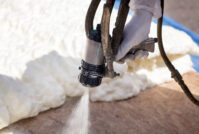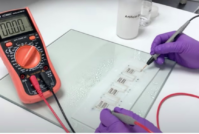look what we did!
Category: Innovation Bonds
Polyurethane Helps Campers Stay Comfortable in the Great Outdoors
Warmer weather offers a great time to hit the trail. If you fancy yourself to be the adventurous type, you may even opt to spend a few nights in the great outdoors. Whether roughing it in your own backyard or in the deep recesses of one of our National Parks, you could have polyurethane to thank for helping to shelter you from the elements.
In hundreds – if not thousands – of tents on the market today, polyurethane plays an integral role in tent construction:
Floor coatings
Several tents use a polyurethane coating on their underside as protection. Polyurethane offers some insulation, and it can shield the tent from abrasions.
In addition to a polyurethane base, some enterprising campers also use a custom ground covering called a footprint, which is also often treated with a coating of polyurethane. Cut to the exact size of the tent floor; a footprint provides an extra layer of protection. It also offers a clean surface where you can set up your tent.
Fabrics
In many cases, tent fabrics are treated with a coating of polyurethane to help prevent water from passing through the material. When treated, a polyurethane coating closes the microscopic gaps between threads in a material’s weave.
Instead of pooling inside the tent, the water beads together on the surface and runs down the side – keeping the occupants inside nice and dry.
Seams
The one place where your shelter is most likely to leak is at the seams – the area where panels of material are joined together either through stitching or sealant. Since keeping tent occupants dry is so important, seams on many tents come pre-treated with a polyurethane coating or a seam tape.
As time passes, these areas can become compromised or vulnerable. Once a season, many campers will set up their tents in a controlled environment just to check their seams. Usually, a quick going over of the damaged areas with a polyurethane sealant or seam tape is enough to improve waterproofing. This one step can extend the life of a tent for several more years.

























